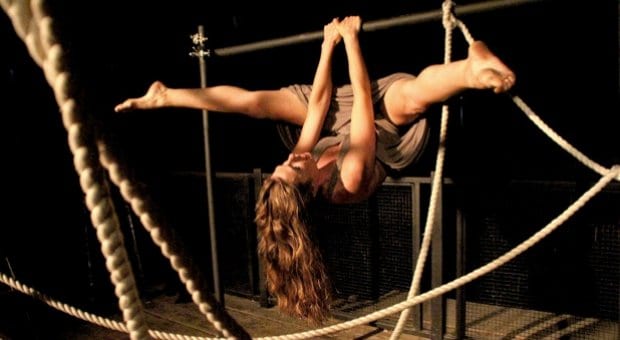“Suffering Sappho!”
For those of us comic geeks who grew up adoring a certain star-spangled amazon, this frequently uttered epitaph was our first exposure to history’s most famous Greek lyric poet. But aside from Wonder Woman’s dubious endorsement, Sappho was much more than some vague deity in perpetual torment.
Born some 600 years before the (purported) birth of Christ, Sappho crafted thoughtful melodic poems about love and beauty that survive to this day in the form of fragmented papyrus scrolls and respectful mentions by other writers; even Roman lyric poet Horace was a fan.
Her musings on the nature of passion continue to inspire other artists, and to many in the queer community, this woman from the island of Lesbos represents the quintessential lover of women. Her infatuated scribblings about other gals have inspired many of our Sapphic sisters, and she’s often characterized as the mother of lesbianism.
Canadian director Jessica Ruano’s knowledge of Sappho was limited to a few readings of assorted poems before she stumbled upon an interesting one-woman play by Jane Montgomery Griffiths. “I was in London looking for some ancient Greek plays for research when I found this script,” Ruano says. “I had a very emotional response. I immediately started connecting it to various love affairs I’ve had. You can recognize yourself so easily in the writing.”
Griffiths’s play is taken largely from Sappho’s poetry; the playwright adapted her own translations of the Greek text into a narrative involving a love affair between the ancient muse and a young American chorus girl named Athis. Sappho has taken on human flesh and is posing as the leading lady in a play, catching the attention of the introverted chorus girl.
“I relate to Athis a lot,” Ruano says. “She’s insecure a lot of the time, she doesn’t believe in herself, and she’s always in her head, rethinking and rethinking… But she’s not afraid of falling in love.”
And fall in love she does with the alluring and mercurial leading lady. “Oh, Sappho is mad, she’s crazy, she’s wonderful,” Ruano says. “She’s so opinionated and very aware and political. But she’s also very emotional and occasionally emotionally violent. Sure she’s a bit of a diva, but she’s also prone to falling head over heels in love. It’s a fictional portrayal, of course, as we know so little about her.”
One of the director’s favourite scenes between the two is a romantic interlude that leaves Ruano quite weak in the knees. “It’s such a wonderful seduction scene,” she says. “They’re in Athis’s apartment, and it’s messy and freezing cold. [Sappho] suddenly tells her to go to the corner and take off all of her clothes. It’s that beautifully awkward moment where someone who is really in charge of their sexuality takes over.”
Actress Victoria Grove portrays both characters in the piece, which Ruano adapts specifically to each venue as the play tours across North America and Europe.
“What I wanted to do with this piece is use everything we have in the space,” Ruano says. “Let’s not make fixed features obstacles; let’s make them part of the play. It can change the audience’s perspective in powerful ways.”

 Why you can trust Xtra
Why you can trust Xtra


